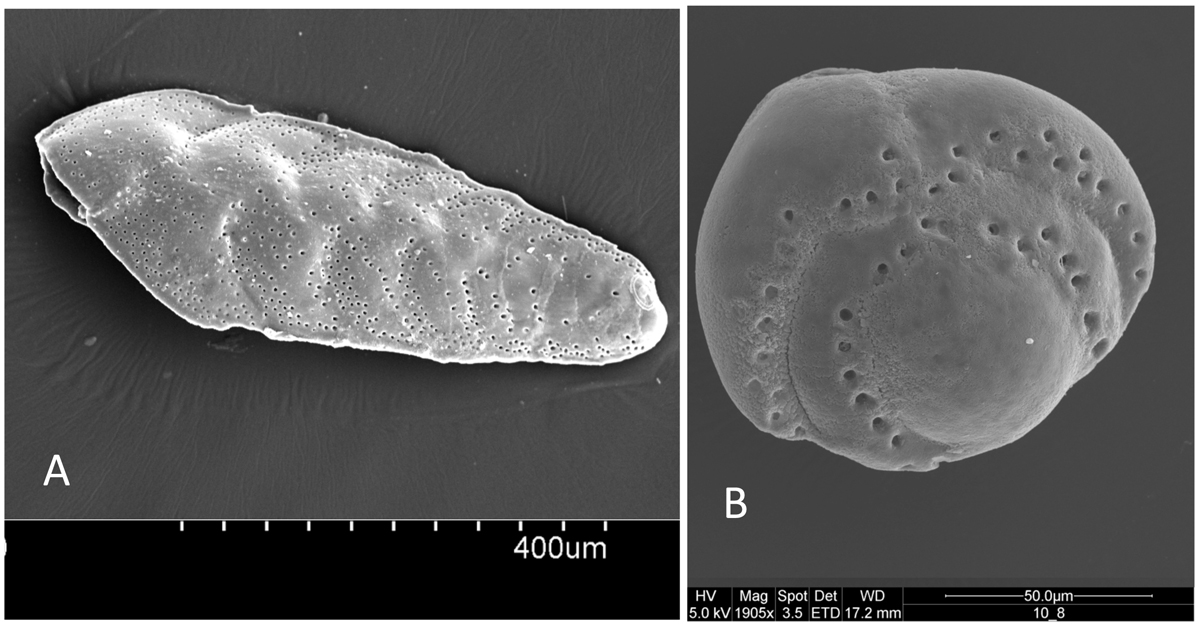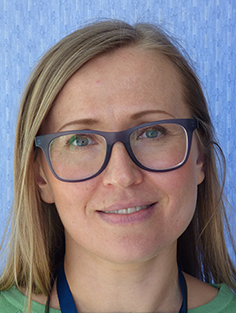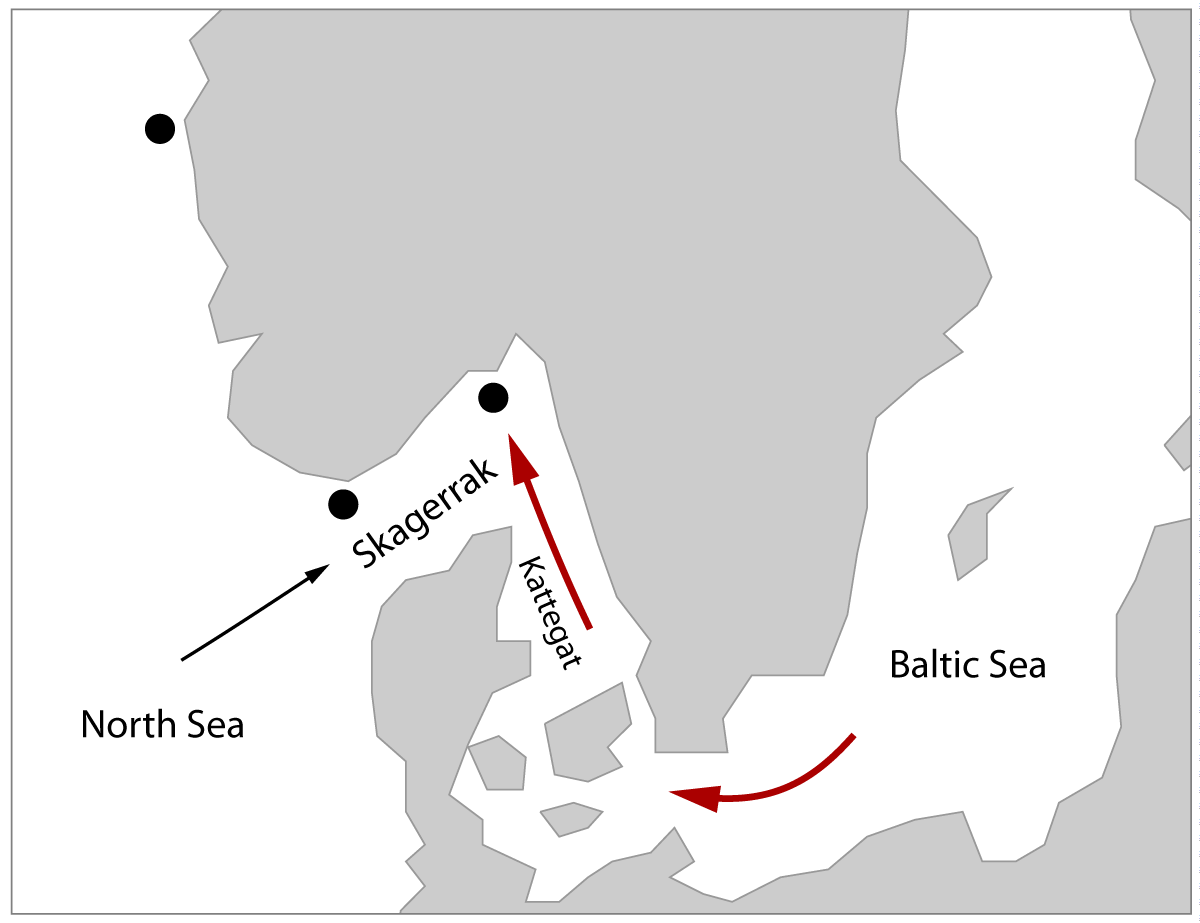Until 1700 years ago, there was hardly a trace of the tiny organism Brizalina skagerrakensis at the bottom of the Skagerrak strait, between Norway, Sweden and Denmark. Then the numbers started to go up. The change occurred simultaneously with an increase in precipitation, floods and run-off in southern Scandinavia.
A new study connects all of this to increased primary production in the Skagerrak.

Shelf fossils tell of surface bloom
Each spring there is an algal bloom outside the coast of Norway. The algae are phytoplanctic plankton – the primary producers of the ocean. Providing food for other organisms, they are the basis for life in the ocean.
Algal blooms occur at the surface, but the evidence of changes in primary production in the Skagerrak was found at the ocean floor.

– Brizalina skagerrakensis loves fresh micro algae, says Irina Polovodova Asteman.
She has led the work with the study, where scientists from the Bjerknes Centre, Uni Research and the University of Bergen have collaborated with colleagues from Poland and Germany.
The researchers have analyzed the content in sediment cores from the ocean floor at the Norwegian coastal shelf, 300–500 meters below the sea surface.
In the sediments, they found fossile shells of Brizalina skagerrakensis, a tiny organisms living at the sea floor. Their analyses show that the Brizalina abundance was extremely low from 4500 to about 1700 years ago. Then it abruptly increased. Brizalina must have had a lot more to eat, and the study points to algal blooms in the surface waters as the food source. Laboratory experiments at the University of Oslo have previously shown that Brizalina prefers to feed on freshly settled algae.
"Large amounts of micro algae at such depths normally require massive algal blooms at the surface", explains Irina Polovodova Asteman. "Large amounts of diatoms and a high carbon content in our samples also confirm this."
Nutrients from brackish water
Where did the nutrients allowing the algae to bloom come from? Several rivers feed into the Skagerrak, ocean currents transport saline water from the North Sea, and brackish water enters from the Baltic Sea through the Kattegat strait.
Other studies have documented a shift to more precipitation, more flooding and an increase in the outflow of brackish water from the Baltic Sea in the same period. Thus, the most likely sources of nutrients were increased transport from the Baltic Sea and increased run-off from the rivers in eastern Norway.

Irina Polovodova Asteman and her colleagues used data from three sediment cores. They found the highest increase in Brizalina skagerrakensis in the easternmost core. The results pointed to brackish water from the Baltic Sea as the main source of increased nutrients.
"The primary production in the Baltic Sea was also higher during this period, and this may have helped increase the productivity in the Skagerrak", says Asteman.
When the algae in the surface waters in the Baltic Sea die, they fall to the sea floor, like the algae in the Skagerrak and all other seas. In periods with high production of algae, layers of decaying organic matter may build up at the bottom. These layers may have leaked out phosphorus, which then has been transported with a stronger outflow from the Baltic Sea, nourishing algal production in the Skagerrak.
In addition to increased transport of nutrients from the Baltic Sea, erosion due to deforestation, more precipitation leading to high run-off and increased coastal upwelling may have contributed to a higher primary production in the Skagerrak during the last 1700 years.
Reference
Polovodova Asteman, I., Risebrobakken, B., Moros, M., Binczewska, A., Dobosz, S., Jansen, E., Sławińska, J., Bąk, M., Late Holocene palaeoproductivity changes: a multi-proxy study in the Norwegian Trench and Skagerrak (North Sea). Boreas: doi/10.1111/bor.12264/full

